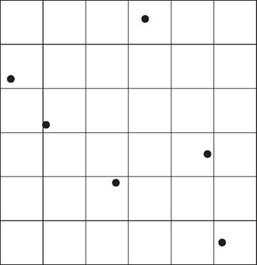

Computeįirst, let’s save the file with a new file name: Tutorial 08.slmd. We can now run the Probabilistic Analysis. We have defined 3 Random Variables (cohesion, friction angle and unit weight) with Normal distributions. For more information about Statistical Distributions, please see the Probabilistic Analysis section of the Slide2 Help system.Therefore it is recommended that the Relative Minimum and Relative Maximum values are equal to at least 3 times the standard deviation, to ensure that a complete (non-truncated) NORMAL distribution is defined. For a NORMAL distribution, 99.7 % of all samples should fall within 3 standard deviations of the mean value.distances from the MEAN value), rather than as absolute values, because this simplifies data input. The Minimum and Maximum values are specified as RELATIVE values (i.e.In order to complete the process of defining the Random Variables, we must enter:įor each variable, in order to define the statistical distribution of each random variable.Įnter the values of Standard Deviation, Relative Minimum and Relative Maximum for each variable, as shown below. This allows you to easily define the statistical distribution for each random variable. In the Material Statistics dialog, the material properties which you selected as Random Variables, now appear in the dialog in a spreadsheet format. You will be returned to the Material Statistics dialog, which should now appear as follows: We will be using the default (Normal Distribution), so just select the Finish button. The second dialog allows you to select a Statistical Distribution for the Random Variables. Select the checkboxes for Cohesion, Phi and Unit Weight. The first dialog allows you to select the material properties that you would like to define as Random Variables.
#Latin hypercube sampling explained series
When using the Add option, you will see a series of three dialogs, in a “wizard” format, which allow you to quickly select the material properties that you wish to define as Random Variables. Select the Add button in the Material Statistics dialog.

This can be done with either the Add or the Edit options, in the Material Statistics dialog. We are now going to define Random Variables for this material. Notice that “Soil 1” is selected on the left side. You will see the Material Statistics dialog. This is easily done with the Material Statistics dialog. Random variables are defined using the options in the Statistics menu.įor this tutorial, we will define the following material properties as Random Variables: In order to carry out a Probabilistic Analysis, at least one of your model input parameters must be defined as a Random Variable. Notice that a Statistics menu is now available, which allows you to define almost any model input parameter as a random variable. The safety factor will be re-computed N times (where N = Number of Samples) for the Global Minimum slip surface, using a different set of randomly generated input variables for each analysis. When the Analysis Type = Global Minimum, this means that the Probabilistic Analysis is carried out on the Global Minimum slip surface located by the regular (deterministic) slope stability analysis. Note that we are using the default Probabilistic Analysis options: For more information on running a spatially variable analysis, see Tutorials 33 and 34. Notice the Spatial Variability Analysis checkbox. In the Project Settings dialog, select the Statistics page, and select the Probabilistic Analysis checkbox. To carry out a Probabilistic Analysis with Slide2, the first thing that must be done, is to select the Probabilistic Analysis option in the Project Settings dialog. Select File > Recent Folders > Tutorials Folder from the Slide2 main menu, and open the Tutorial 01 Quick Start.slmd file. This tutorial will be based on the same model used for Tutorial 1, so let’s first read in the Tutorial 1 file. All tutorial files installed with Slide2 can be accessed by selecting File > Recent Folders > Tutorials Folder from the Slide2 main menu. The finished product of this tutorial can be found in the Tutorial 08 Probabilistic Analysis.slmd data file. It will demonstrate how quickly and easily a probabilistic slope stability analysis can be performed with Slide2. This tutorial will familiarize the user with the basic probabilistic analysis capabilities of Slide2.


 0 kommentar(er)
0 kommentar(er)
